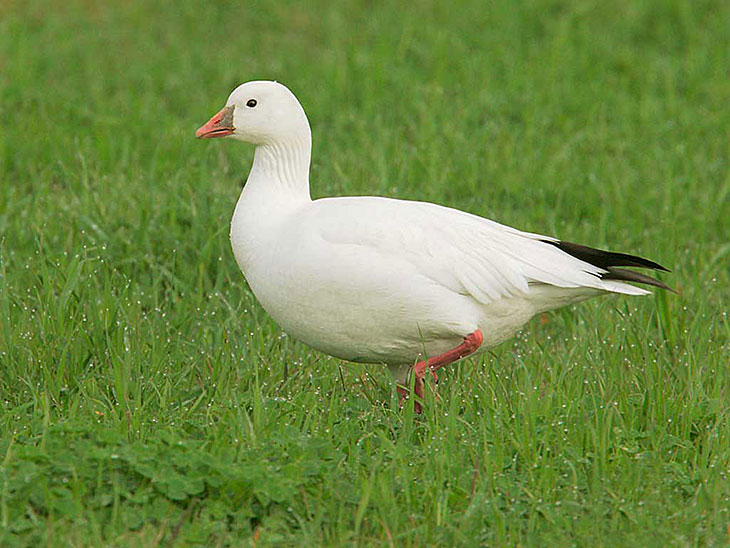Very similar in appearance and also closely related to the Lesser Snow Goose, the Ross’s Goose is a bit smaller and breeds in highly concentrated fashion in a relatively small area of arctic Canada. Some colonies can number well over a quarter-million birds. Ross’s Geese often associate with Lesser Snow Geese on the breeding grounds.
Jaegers, gulls, and foxes all prey on eggs and young of Ross’s Geese. Defensive charges and chases are used in an effort to repel predators. Those young that survive can live for many years. The oldest known Ross’s Goose in the wild lived over 21 years.
Description of the Ross’s Goose
BREEDING MALE
The Ross’s Goose is a small goose with a small pinkish bill. It is white with black wing tips, although there is also a rare bluish-gray form.
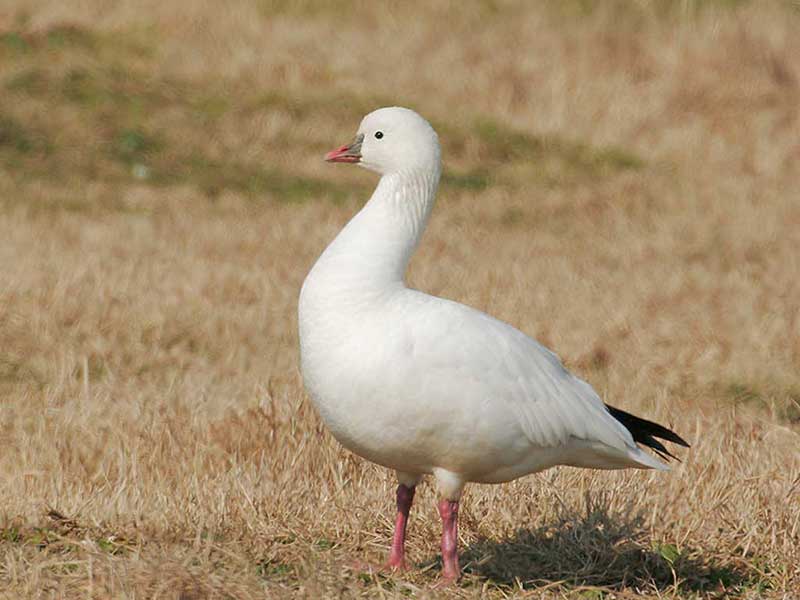
Photograph © Tom Grey
Female
Sexes similar.
Seasonal change in appearance
None.
Juvenile
Similar to adults, may be more dusky.
Habitat
Tundra, marshes, and fields.
Diet
Grasses sedges, seeds, and grains.
Behavior
Forages by grazing.
Range
Ross’s Geese breed in northern Canada and winter along the East Coast, in California, and in the south-central U.S.
Fun Facts
Ross’s Geese are often seen mixed in with flocks of Snow Geese, where the size difference can be readily apparent.
Ross’s Geese will chase Snow Geese away from their territories.
Vocalizations
Squawks and “keek-keek-keek “ flight calls are given.
Similar Species
- Similar species: The Snow Goose is larger and has a larger bill with a large black “grinning patch”.
Nesting
The nest is a bowl of plant material on the ground.
Number: 4.
Color: White.
Incubation and fledging:
– Young hatch at 21-23 days.
– Young fledge (leave the nest) shortly after hatching but remain with the adults for some time.

Small, pink bill, reddish legs ad feet. Black wingtips show when bird is grazing. The brown markings at the bottom third of the bill vary by individual bird and may be missing completely. Photograph by Tom Grey.
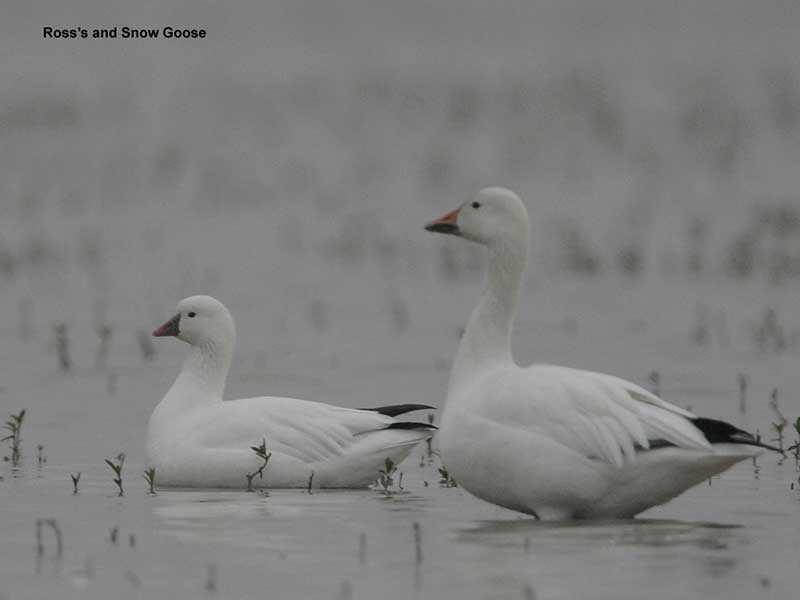
Ross’s Goose on the left. Ross’s Goose has more rounded head, and smaller bill. Photograph by Greg Lavaty.
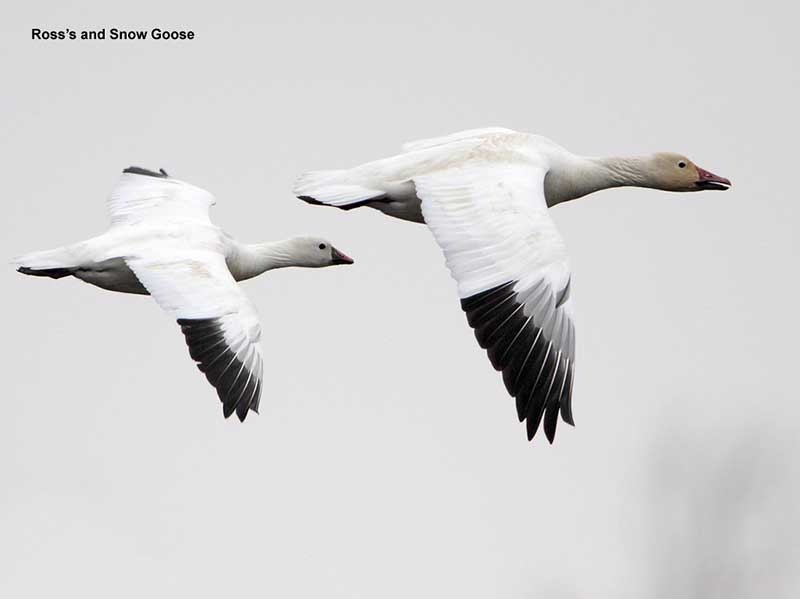
Ross’s Goose on the left, smaller than the Snow Goose. Photograph by Greg Lavaty.
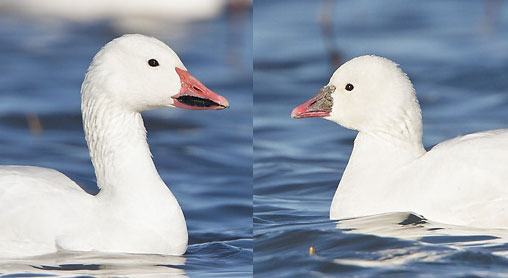
Compare the shape of the head and the bill of these two similar species. Snow Goose with the black “grin” on the left.

